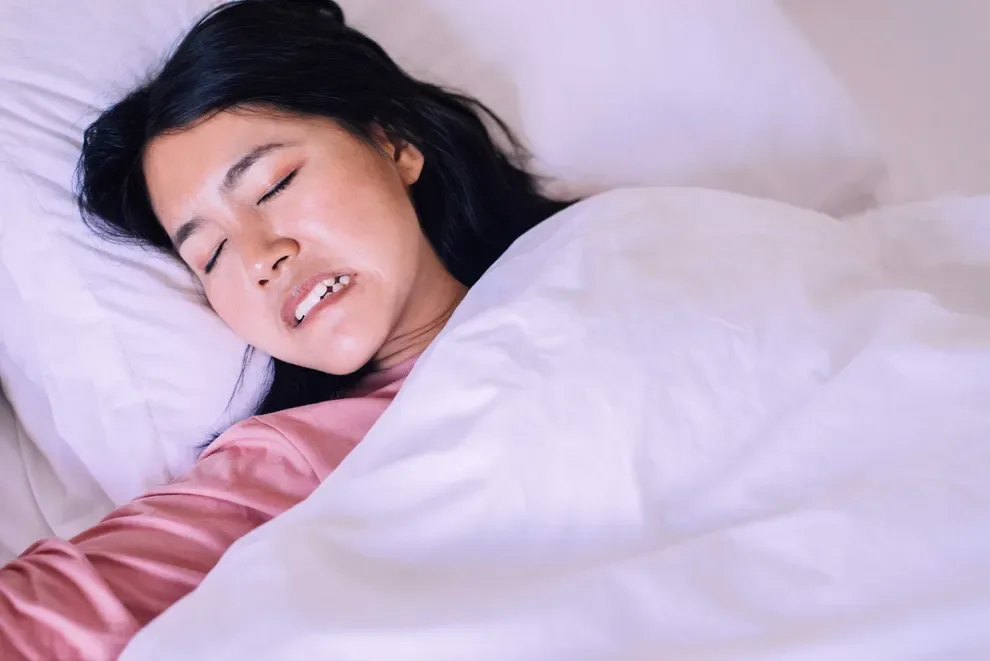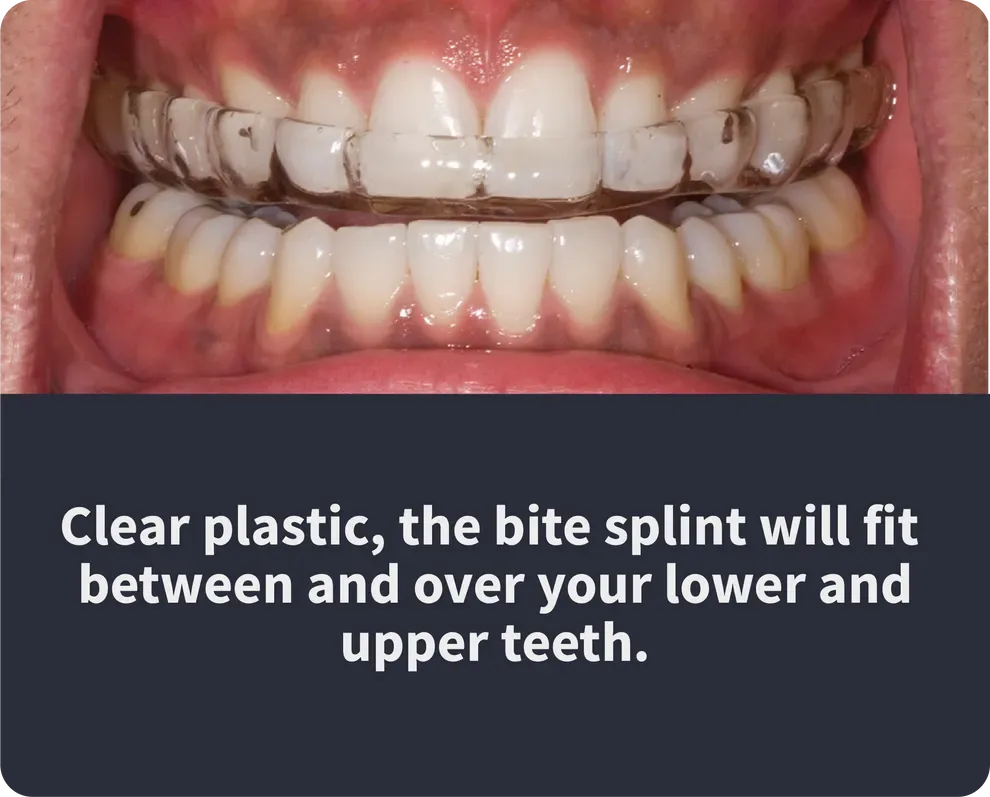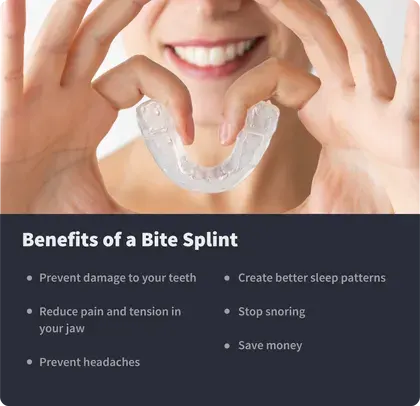Bite Splint: Uses, Benefits, and Side Effects

Table of Contents
- How To Use a Bite Splint
- Benefits
- Who Is a Candidate?
- Side Effects
- OTC or Custom Splint?
- References
Dentists recommend bite splints for people who grind or clench their teeth, a condition known as Bruxism. People who have this condition, which presents mostly at night when they sleep, damage their teeth and jaw when they sleep, unaware of the self-inflicted damage they cause.
Untreated, bruxism can result in mild to severe pain in your teeth and jaw. Bruxism can even cause severe headaches. People with bruxism must be treated it will cause wear and tear on your teeth 80 times more than the normal amount.
The best treatment for bruxism is a bite splint, a device your dentist will provide for you to use at night while you sleep. Your dentist may suggest you wear it during the day as well if your condition is severe. The bite splint will reduce the grinding of teeth and pressure to relieve you of symptoms resulting from grinding. The bite splint will also protect your teeth.

How Do You Use a Bite Splint?
Dental bite splints, also known as occlusal splints, include mouth guards and bite plates. The devices are typically custom-made by your dentist from clear plastic. The bite splint will fit between and over your lower and upper teeth.
Bite splints serve to stabilize your jaw and ease muscle tension.
They do so because they prevent you from clenching your jaw and grinding your teeth that is responsible for causing muscle pain and tension.
Typically the bite splint is worn at night as this is the most common time for people to grind their teeth. Treatment normally lasts about three months. If you also suffer from a muscle spasm or disc displacement, your dentist may suggest you wear the splint during the day for about two weeks.
What are the Benefits of a Bite Splint?

Grinding your teeth typically happens while you are asleep. However, grinding can cause disturbance to your sleep patterns. If you wear a bite splint while you sleep, you will receive several benefits from the device. You will:
Prevent damage to your teeth
Reduce pain and tension in your jaw
Prevent headaches
Create better sleep patterns
Stop snoring
Save money
A bite splint will keep your bottom and top teeth apart as you sleep. When you grind your teeth, you cause multiple problems for your teeth. Because the condition happens while you sleep, you have little to no control over the grinding, so the bite splint helps you stop grinding your teeth.
Clenching your jaw is another condition many people do while they are asleep. When you clench your jaw it suffers tension in the temporomandibular joint or the TMJ. Wearing a bite splint will reduce jaw tension and will be customized to fit comfortably and lightly in your mouth. The splint will significantly reduce the stress in your jaw joints and muscles as you sleep.
Headaches are a common symptom of bruxism. While you sleep if you clench your jaw or grind your teeth, it will most likely cause you to suffer from headaches. Bite splints will prevent you from clenching or grinding and therefore reduce the risk of you waking up with headaches.
Bruxism is a bad habit, but with a bite splint, you can stop the habit. When you no longer suffer from bruxism, you will get a healthier sleep at night.
Snoring can be more of a problem for your partner than for you, but wearing a bite splint at night will keep your top and bottom jaw apart. When your jaw is separated with the bite splint, it will increase the amount of air you breathe. This increase of air will make your breathing better and reduce or stop your snoring.
When you stop grinding your teeth and clenching your jaw, you reduce the risk of damaging your teeth. When you prevent damage to your teeth, you reduce the amount of dental work they will require and therefore save you money.
Who is a Candidate for Bite Splints?
Candidates for bite splints include adults older than 18 who have a clinical sign of dental wear and who:
Self-report of nighttime grinding of the teeth
Self-report of bruxism by a dentist
Have an ability to follow instructions
Knockout conditions for splints include:
Sleep apnea
Cardiovascular disease
Periodontal disease
Neurologic or sleep disorders
Wearing active orthodontics or removable prostheses
Taking medications for movement disorders or sleep disturbances
Having limits of jaw functions
What Are Side Effects of Bite Splints?
Bite splints, also known as stabilization splints, are a frequent treatment for bruxism or TMD, but little is reported regarding the side effects of these devices. The information available for adverse effects is scarce but it is thought they can cause a modification on how your teeth come together and modification in breathing patterns.
These side effects are rare, and more studies are needed before conclusive effects can be documented.
Should You Buy Online or Get a Custom Bite Splint?
There are different types of bite splints available that will differ in durability, safety, cost, and comfort. Buying online is typically cheaper, but they will not be made to fit your mouth and teeth perfectly. The bite splints bought online have also been associated with teeth movement, tissue damage, and can present a choking hazard.
A customized bite splint from your dentist will give you the most accurate fit and safest device as it will be specifically for your teeth.
